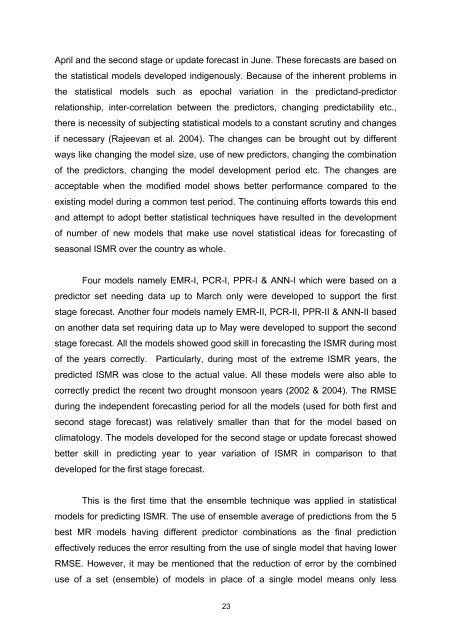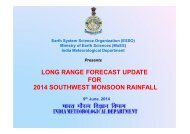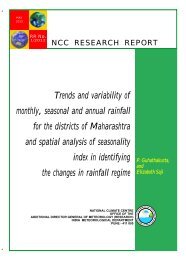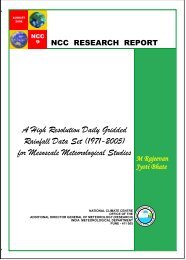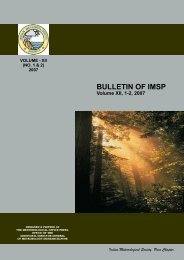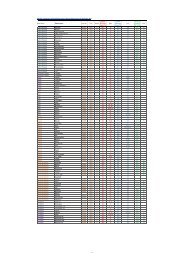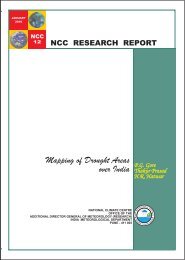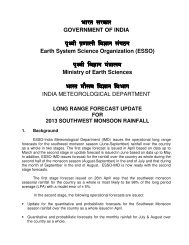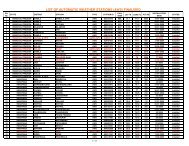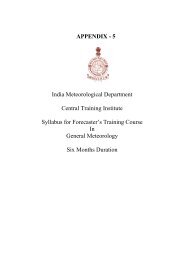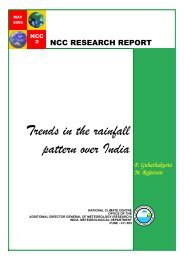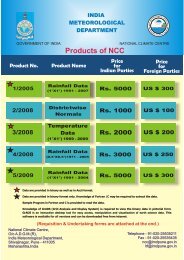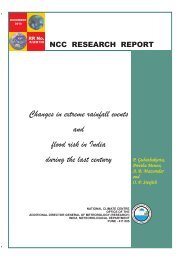NCC Report No. 1 - (IMD), Pune
NCC Report No. 1 - (IMD), Pune
NCC Report No. 1 - (IMD), Pune
You also want an ePaper? Increase the reach of your titles
YUMPU automatically turns print PDFs into web optimized ePapers that Google loves.
April and the second stage or update forecast in June. These forecasts are based onthe statistical models developed indigenously. Because of the inherent problems inthe statistical models such as epochal variation in the predictand-predictorrelationship, inter-correlation between the predictors, changing predictability etc.,there is necessity of subjecting statistical models to a constant scrutiny and changesif necessary (Rajeevan et al. 2004). The changes can be brought out by differentways like changing the model size, use of new predictors, changing the combinationof the predictors, changing the model development period etc. The changes areacceptable when the modified model shows better performance compared to theexisting model during a common test period. The continuing efforts towards this endand attempt to adopt better statistical techniques have resulted in the developmentof number of new models that make use novel statistical ideas for forecasting ofseasonal ISMR over the country as whole.Four models namely EMR-I, PCR-I, PPR-I & ANN-I which were based on apredictor set needing data up to March only were developed to support the firststage forecast. Another four models namely EMR-II, PCR-II, PPR-II & ANN-II basedon another data set requiring data up to May were developed to support the secondstage forecast. All the models showed good skill in forecasting the ISMR during mostof the years correctly. Particularly, during most of the extreme ISMR years, thepredicted ISMR was close to the actual value. All these models were also able tocorrectly predict the recent two drought monsoon years (2002 & 2004). The RMSEduring the independent forecasting period for all the models (used for both first andsecond stage forecast) was relatively smaller than that for the model based onclimatology. The models developed for the second stage or update forecast showedbetter skill in predicting year to year variation of ISMR in comparison to thatdeveloped for the first stage forecast.This is the first time that the ensemble technique was applied in statisticalmodels for predicting ISMR. The use of ensemble average of predictions from the 5best MR models having different predictor combinations as the final predictioneffectively reduces the error resulting from the use of single model that having lowerRMSE. However, it may be mentioned that the reduction of error by the combineduse of a set (ensemble) of models in place of a single model means only less23


